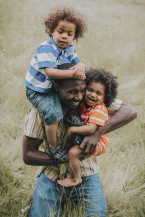Mental Health: Afghanistans Path to Peace

Addressing Trauma: Navigating Afghanistan’s Emotional Landscape
In my travels to Afghanistan, I’ve encountered numerous tales of desperation, depression, and despair. Yet, among these stories, there are glimpses of hope and resilience that paint a more comprehensive picture of the human spirit’s power. Afghanistan, undoubtedly one of the world’s poorest nations, faces an uphill battle in many respects. With an alarming 70% illiteracy rate and the grim reality that the majority of its population has grown up amidst three decades of unending war, the challenges seem insurmountable.
However, beneath these statistics lies a more profound truth. While war, malnutrition, and fading hope have undoubtedly taken their toll, the average age of an Afghan is just 17 years. This reveals an untapped potential in the nation’s youth, many of whom yearn for a brighter future despite their surroundings. A touching instance I remember is of a local man who confided, “My future might seem bleak, but I wish for a brilliant one for my son.” Such sentiments echo the resilience of the Afghan spirit.
In confronting these psychological scars, it’s crucial to provide the right kind of aid. While medical professionals are quick to prescribe medications and international donors focus on infrastructure projects like schools and roads, the emotional trauma remains unaddressed for many. The reason? A lack of effective tools to cope with the heavy psychological weight.
Upon my arrival in Afghanistan, a revelation struck me. Though our specific cultural contexts might differ, our human reactions to pain and trauma are universal. After an enlightening counseling session, a woman expressed, “Because you have truly understood my pain, I can begin to understand myself.” In a society where the family is a cornerstone, it’s essential to address these emotional wounds to prevent further social isolation and potential outbreaks of violence.
To genuinely heal and move forward, empathy is paramount. Everyone deserves to have their experiences acknowledged and validated. Being seen, heard, and understood fosters an environment where trauma can be processed and overcome. With the right support, individuals can channel their experiences into building a brighter future for themselves and subsequent generations. The key takeaway? Even in the most challenging circumstances, like those in Afghanistan, hope persists, and solutions await those who seek them.
Empathy’s Role: Bridging the Gap between Pain and Healing
In the tapestry of human experiences, empathy often stands out as a shining thread, weaving connections between people and bridging emotional divides. My time in Afghanistan served as a profound testament to the transformative power of truly feeling and understanding another’s pain.
At the heart of healing, especially in trauma-heavy regions like Afghanistan, is the act of witnessing pain. It’s not just about acknowledging that someone has suffered; it’s about diving deep into their emotions, seeing the world through their eyes, and embracing the rawness of their experiences. A woman once confided in me after a counseling session, her voice filled with relief, “Because you have genuinely felt my emotions, I can now reconnect with myself.” It’s moments like these that highlight the importance of genuine human connection.
Amidst the backdrop of collective trauma and shared grief, understanding becomes a beacon of hope. The very act of bearing witness to someone’s anguish can pave the way for profound healing. Why? Because when someone feels seen and understood, they gain a newfound strength to confront and process their traumas. It’s like providing a safe harbor for a ship battered by stormy seas – a sanctuary where healing can begin.
Moreover, in cultures where the social fabric is closely knit, and families form the bedrock of society, this empathetic understanding takes on even greater significance. An individual’s emotional wellbeing often extends to their family and community, affecting social dynamics and collective morale. By offering a listening ear, being present, and allowing another’s story to resonate within you, the ripple effect of healing can extend far and wide.
It’s a beautiful realization that the key to alleviating some of the world’s most profound sorrows can often be found in the simple act of understanding. Everyone deserves a witness to their pain, someone who can genuinely say, “I see you, I feel your pain, and you’re not alone.” As my experiences have shown, through the power of empathy, even the deepest of wounds can find a path to healing.
Integrating Tradition and Innovation: The Impact of Psycho-social Counseling
Delving into the vibrant and diverse realm of human emotions and experiences, my memories of Afghanistan evoke a journey of melding time-honored traditions with contemporary psycho-social techniques. In a place where the past and present coexist, the delicate dance of weaving together traditional healing with modern counseling practices became a mission of both significance and necessity.
Afghanistan’s rich tapestry of culture and history often intertwines with its narratives of trauma, making healing a complex endeavor. While traditions have their own healing powers, embedded in centuries-old wisdom, the pressing challenges of the modern era necessitate an evolved approach. The advent of psycho-social counseling emerged as a bridge between these worlds.
The heart of this initiative was a simple yet powerful idea: to develop a culturally-sensitive counseling approach. By grounding modern therapeutic techniques in the cultural nuances of the Afghan society, the healing process became more holistic and accessible. We set up hand-painted counseling centers around Kabul, inviting those seeking solace and understanding. The results? Thousands found their way to our doors, and a staggering majority discovered renewed hope and the means to navigate their emotional landscapes.
Furthermore, the dynamic blend of old and new had reverberations beyond individual healing. In collaboration with key stakeholders, we worked to embed this holistic approach into Afghanistan’s healthcare system. With training manuals in place and the Ministry’s approval, psycho-social counseling found its rightful spot in the broader mental health strategy. This integration not only elevated the quality of care but also demonstrated how resilience and innovation could harmoniously coexist.
Ultimately, the essence of this journey isn’t just about bridging two worlds. It’s about recognizing that, irrespective of time and place, the human soul seeks understanding, empathy, and a way to make sense of its sorrows. In the meeting of traditional wisdom and modern insights, we discovered that the path to healing is both timeless and ever-evolving.
Mental Health’s Pivotal Role in Crafting Harmonious, Resilient Societies
Nestled within my recollections of Afghanistan are profound insights into the intricate connection between mental health and the building of civil societies. There’s an undeniable link between the well-being of individuals and the collective health of a community. As the narrative unfolds, it becomes evident that the seeds of peace and social cohesion often germinate in the fertile ground of collective psychological well-being.
The landscapes of Afghanistan, both physical and emotional, are dotted with stories of trauma, resilience, and hope. Within these tales, a recurring theme emerges: the immense weight of unspoken trauma. Without addressing these silent burdens, societal rifts deepen, cycles of violence persist, and the hopes of harmonious living fade.
The introduction of psycho-social therapy in this context was akin to a gentle rain nourishing parched land. By providing individuals with tools to process trauma, navigate emotional landscapes, and rebuild shattered self-worth, a ripple effect began to emerge. Families started to heal, communities became more cohesive, and a brighter vision of the future became conceivable.
One poignant memory captures the transformative power of this approach. An individual, once consumed by trauma, remarked on the newfound clarity and purpose they felt after undergoing therapy, noting their role in shaping a peaceful society. Such testimonials are a testament to the idea that when individuals find healing, communities can indeed rebuild.
In essence, it’s not just about the psychological well-being of an individual but the health of the collective. As we forge ahead, striving for peace and prosperity, it becomes imperative to recognize the interdependence between mental health and the foundation of resilient societies. True peace, after all, starts from within.
Conclusion
In the intricate tapestry of societal evolution, the threads of individual mental health weave patterns of harmony, resilience, and progress. It is a profound realization that the stability and prosperity of entire communities hinge on the well-being of their members. Often, we become engrossed in external initiatives to foster peace and unity, overlooking the deep-seated traumas and emotional scars that hinder collective advancement. By turning our gaze inward, addressing these internal battles, and empowering individuals with the tools to heal, we set the stage for an era of genuine reconciliation and progress.
The stories from Afghanistan are more than just tales of survival; they’re lessons in the transformative power of empathy, understanding, and psychological support. For societies to truly flourish, we must prioritize the emotional well-being of every individual. Only then can we hope to stitch together a future that is not only prosperous but also deeply harmonious and meaningful. In the end, it’s clear: the path to lasting peace and unity is paved with the bricks of collective mental health and well-being.
















